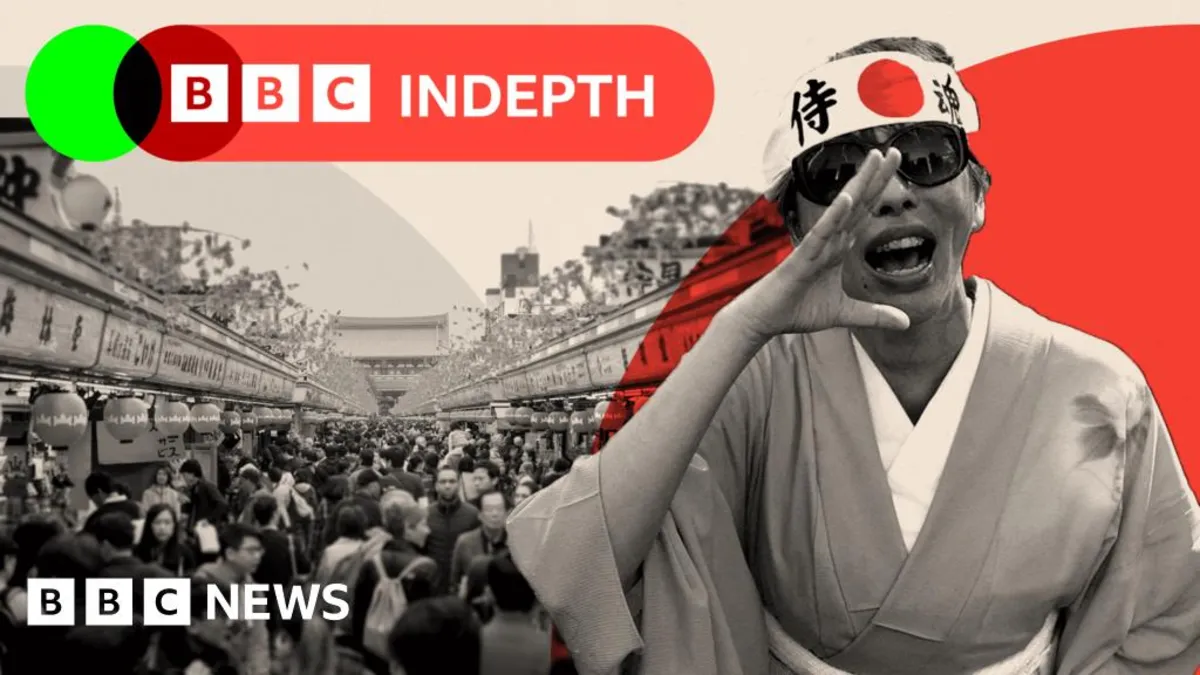
Japanese politics, typically characterized by stability and predictability, is undergoing a dramatic transformation. The recent elections saw the once-obscure far-right party, Sanseito, leap from just one seat to an impressive 15 seats, marking its emergence as a significant player in Japan's political landscape. Their Japanese First slogan, echoing Donald Trump's America First, has disrupted the long-standing dominance of the ruling Liberal Democratic Party (LDP) and its beleaguered prime minister, Shigeru Ishiba.
For Prime Minister Ishiba, the past week has been tumultuous. His ruling LDP coalition suffered a significant defeat, losing its majority in Japan's upper house, following a prior loss in the lower house last year. This defeat has sparked calls for his resignation from within his own party. However, amidst this political upheaval, Ishiba secured an agreement on tariffs with the United States, which President Trump heralded as a massive deal, providing a much-needed stability boost to Japan's economy. Yet, this economic stability does little to quell the political turmoil that Japan is currently facing.
Japan has long been regarded as one of the most stable democracies globally, with the LDP governing almost uninterrupted since 1955. This political stability has made Japan seemingly immune to the populism that has swept through many other nations. However, the rise of Sanseito signals a serious challenge to this status quo, marking one of the most significant shifts in post-war Japanese politics.
The past few years have been particularly challenging for Japanese households, grappling with rising inflation and stagnant wages. A notable example is the price of rice, a staple in Japanese cuisine, which has doubled in price to over 4,000 yen (£20) for a typical 5kg bag. This surge in cost is attributed to a supply shortage due to a poor harvest and compounding factors such as a recent earthquake that led to panic buying. Local media has shown long queues of shoppers desperate to purchase rice, reflecting widespread anxiety about rising prices.
Momoko Abe, a mother shopping in northern Tokyo, expressed her shock at the rapid price increase, highlighting how it affects not just individual families but businesses as well. Similarly, 65-year-old Watanabe Takeshi remarked on the necessity of purchasing rice despite its high cost, emphasizing the government's control over rice prices. Agriculture Minister Shinjiro Koizumi has promised to address these rising prices, but the ongoing challenges speak to a government struggling to manage the economy effectively.
The discontent among the youth is palpable. Young voters like Eriko Harada and Uta Kato express their frustrations, stating that Sanseito resonates with their desire for genuine representation. The party's appeal is partly rooted in its vocal stance against the government’s policies regarding immigration, a hot-button issue in Japan, where foreign resident numbers have reached a record 3.77 million. This increase, while deemed necessary for Japan's aging population, has sparked fears among some citizens about its impact on local resources and social stability.
The rise in immigration has been met with mixed reactions. While many recognize the necessity of foreign workers to sustain the economy, others, like young voter Uta Kato, voice concerns over the perceived increase in rule-breaking among immigrants. Sanseito has capitalized on this anxiety, suggesting that the government’s lenient immigration policies have led to a decline in societal order. Party founder Sohei Kamiya has claimed that Japanese citizens feel uneasy due to a lack of established rules for accepting foreigners.
In addition to immigration, the surge in tourism has also fueled frustration among Japanese citizens. The weak yen has made Japan an attractive destination, resulting in nearly 37 million tourists visiting last year. However, incidents involving tourists behaving inappropriately have sparked public outcry. Notable incidents, such as an American tourist vandalizing a sacred shrine, have intensified feelings of disrespect towards Japanese cultural norms.
Local residents in areas popular with tourists have voiced their concerns about safety and public decorum. Kazuhiko Iwama, a lifelong resident of Fujikawaguchiko, highlighted the dangers of tourists disregarding traffic rules in pursuit of the perfect photo of Mount Fuji. These grievances have been harnessed by Sanseito, which has merged concerns about tourism and immigration into a broader narrative about the threats posed by foreigners.
Founded in 2020 during the COVID-19 pandemic, Sanseito gained traction through social media and controversial messaging. Kamiya, influenced by Trump's bold political style, has drawn support from those disillusioned with traditional parties. His focus on issues such as immigration and welfare spending resonates with a growing segment of the population seeking change.
As analysts observe this shift, they note that Sanseito's success may be more about the delivery of its message rather than its content. The party's passionate rhetoric appeals to voters aged 30 and 40 who desire change, even if they don't fully endorse all of Kamiya's policies. This dissatisfaction with the LDP's moderate approach has led many conservative voters to seek a more hardline alternative in Sanseito.
While it remains uncertain whether this populist trend will endure, it is evident that Japan's political landscape is evolving. Despite the LDP’s status as the incumbent powerhouse, dissatisfaction among voters indicates that traditional political norms can no longer be taken for granted. The far-right's rise underscores a growing appetite for change among a younger generation eager to redefine Japan's political narrative.
As Japan navigates this complex political terrain, the enduring influence of global trends, such as the impact of Trump and rising far-right movements worldwide, will continue to shape its future. The question remains: what will this new political reality look like in the coming years?